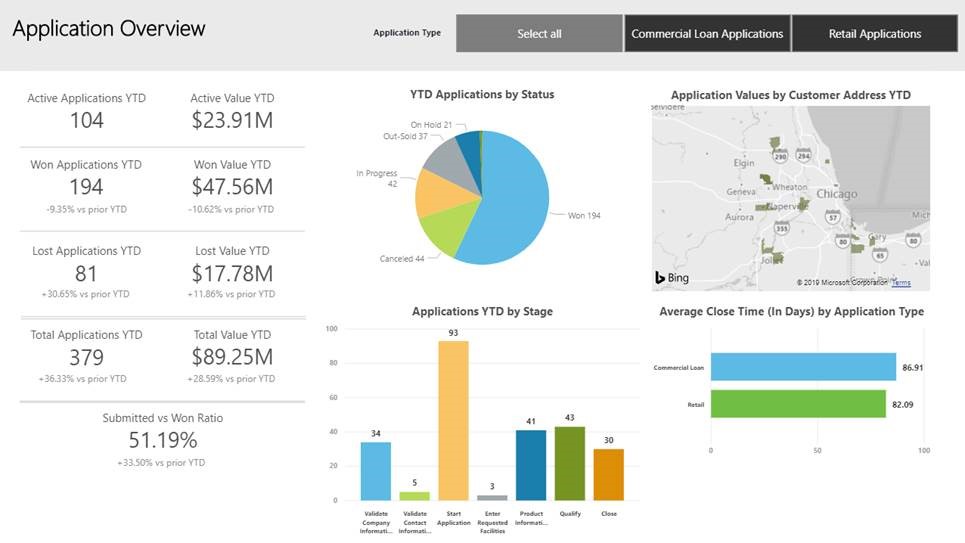
How banks can take their customer engagement to new levels

As businesses work to keep pace with the rapidly changing needs and expectations of consumers, many are calling the customer experience the next competitive battleground. This certainly rings true in the financial services industry where digitally-minded consumers want to bank when and how it suits them and are willing to purchase products or services from their primary bank’s competitor or switch banks if unsatisfied.
To better serve consumers now and in the future, financial institutions are recognizing they must rethink the way they do business and innovate quickly. And they are turning to technology to help. A global PwC survey of the top 300 banking and capital market firms showed customer experience management is one of their three overall IT investment areas.
So, what role does technology play in delivering a better banking experience—the kind of experience that will differentiate them from the competition and drive customer loyalty and lasting relationships?
Banking on data
There are a number of game-changing technology innovations that can help financial services organizations drive differentiated and personalized experiences. At their core is the ability to tap into the volumes of available data—from transactions, life-events, marketing, social, mobile and more—and use it in meaningful ways.
The first are customer engagement solutions that can follow the customer journey from marketing to sales and through to service. Artificial intelligence and sophisticated analytics and machine learning capabilities can capture the volumes of generated data; integrate and orchestrate that data across lines of business and channels; and manage, analyze and present it as usable information to the people who need it to make better decisions.
Easy-to-use productivity solutions and powerful data visualization can also make it easier for employees to spot trends and take quick action. And it is not just about reacting to customer requests. With these technologies, banking organizations can uncover latent needs, predict future behavior, and proactively recommend the right product or service.
When financial services firms have access to more relevant information—from both inside and outside their organization—throughout their customer’s banking journey, it can help everyone, from personal bankers to financial advisors to mortgage lenders, seize the opportunity to create meaningful interactions that are personal, relevant and timely.
Unlocking new value
In many cases, today this information resides in multiple silos and without a well-defined data definition. Deriving value from that data is time-consuming as banks are required to undertake complicated data transformation projects to standardize the data to deliver the differentiated experiences customers are demanding. If financial services could use a common definition of the data, they can create value from that data quickly over a wide set of data sources.
Microsoft’s goal is to empower every person and organization on the planet to achieve more. Based on the industry’s current needs, today at the Microsoft Business Applications Summit, we are releasing to public preview a new Banking Accelerator targeting both Retail and Commercial Banking. Included in the Accelerator is a banking data model, sample applications, and connected scenarios across Microsoft’s cloud, business applications and productivity tools to help take customer engagement to new levels. Here’s a look at how it works.
Microsoft Banking Accelerator
The banking data model extends the Microsoft Common Data Model for banking-specific data elements such as Know Your Customer (KYC), loans, mortgages, referrals, branch details, collateral, credit facilities and more. A common definition and model enable our financial services customers and partners to build solutions on the same data model for improved consistency and new interoperability that can deliver 360-degree customer views, improved insights and streamlined processes across the various lines of business at the bank.
The sample banking applications and businesses processes span common banking scenarios such as customer onboarding and loan proposals, integrated with dashboards and reporting capabilities, to help banks more easily see what is possible and unlock business value.

And the connected scenarios included in the new Accelerator leverage Microsoft Azure, Microsoft Dynamics 365, Office 365 and the Power Platform to provide financial services organizations with an integrated experience tailored to the unique needs of their industry.
The new Accelerator and banking model were developed in close collaboration with our financial services customers and ISV partners. Here’s what some of our partners have to say about their value.
The future of open banking
The new Banking Accelerator is free for all our financial services customers and partners to use and is also provided as part of the open-source creative license and available on GitHub, the largest community of developers in the world. In this way, we’ll continue to improve our offering based on feedback and with help from the open-source community.
As we look to the future, we’ve also been working with BIAN and other open API initiatives to ensure interoperability to help unlock new Open Banking opportunities by allowing banking organizations to more seamlessly and consistently share banking-specific data across disparate systems.
We look forward to helping our customers take their customer engagement to new levels, using advanced and open technologies to accelerate transformation faster than ever. Learn more about our new Banking Accelerator on Microsoft AppSource.




